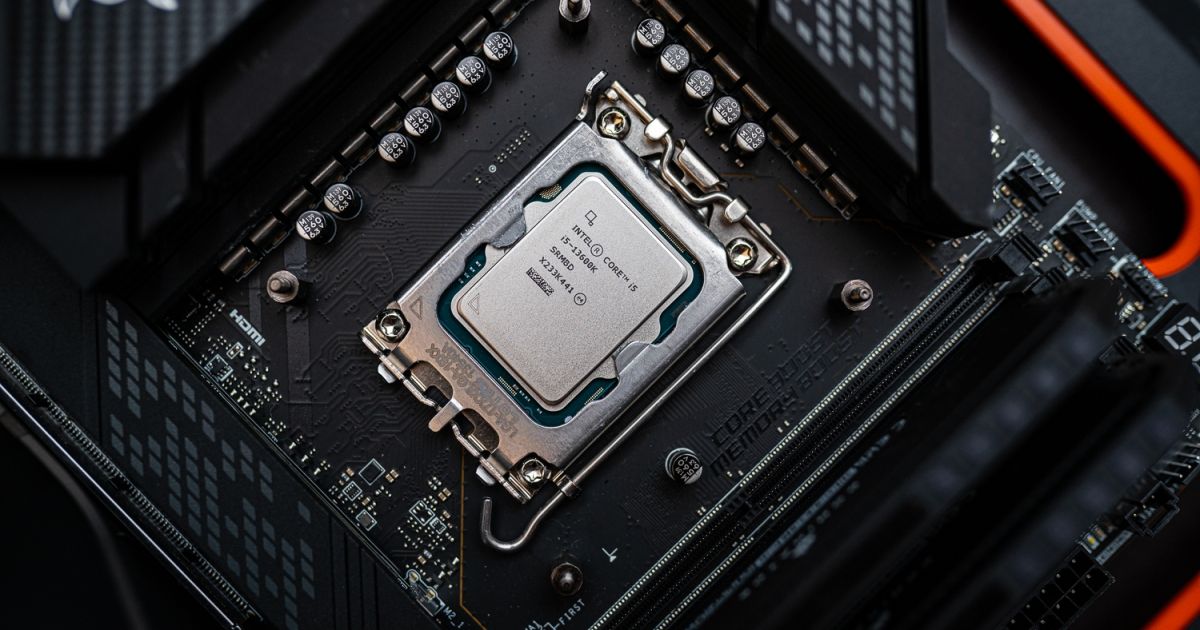The best PC builds: budget, gaming, video editing, and more
Digital Trends may earn a commission when you buy through links on our site. Why trust us?
PC building is fun, but it’s also a bit scary. After all, it’s hardly cheap — you’re going to spend hundreds or thousands of dollars on something that will hopefully last you for years.
So, you need to know exactly what type of PC you’re building and be realistic about what it’ll be capable of. It’s not as simple as buying a pre-built PC, and we could never give a recommendation for every budget and every specific scenario. But hopefully, these example builds give you a good place to start, especially if you aren’t sure exactly how everything fits together.
Related Videos
The best budget PC build
Component Price Link CPU AMD Ryzen 5600G $125 GPU – – – Cooling – – – Motherboard Gigabyte A520M S2H MicroATX $75 Memory Silicon Power Value DDR4 16GB $30 Storage TeamGroup AX2 1TB SSD $36 Case Silverstone FARA H1M MicroATX $60 Power supply Thermaltake Smart 500W $40
If you just want a reliable computer for day-to-day use, all you need is around $400, and you don’t even need to buy a graphics card. You can utilize one of AMD’s Ryzen APUs to double as a processor and a GPU.
This particular build comes with the Ryzen 5 5600G. It’s a decent CPU, although it’s not as fast as its counterpart without the integrated graphics (Ryzen 5 5600). However, it’s good enough for work and entertainment, and it can even handle some entry-level gaming.
If you already have a graphics card, you don’t need the Ryzen 5 5600G and you can just swap it out for the (better) Ryzen 5 5600. No GPU but want a better processor? Get the Ryzen 7 5700G, which is similarly priced but faster than this one.
Aside from the lack of a discrete GPU, this is a solid computer. You’re getting 16GB of DDR4-3600 RAM, a 1TB M.2 PCIe 3.0 NVMe SSD, and a 500W power supply that can handle all of the components with ease. It also leaves you some room for future upgrades.
If you think you might use a GPU with this in the future, get a better PSU to make sure your PC can handle the added wattage. Assuming you want to buy one right away, a nice cheap option for this would be the RX 6600 XT or the RTX 3060, but that’s a huge added cost. You will also need to add a cooler (such as the ) if you do upgrade the CPU or buy a GPU.
The best gaming PC build for under $1,000
Component Price Link CPU Intel Core i5-12400F $158 GPU Sapphire Pulse Radeon RX 6800 16GB $510 Cooling Arctic Freezer i35 A-RGB $45 Motherboard MSI Pro H610M-G DDR4 $90 Memory Patriot Viper Steel 16GB $40 Storage Crucial BX500 1TB SSD $42 Case Phanteks Eclipse P300A $70 Power supply EVGA 600W 80+ Bronze $79
A common misconception these days is that you need a real powerhouse of a PC in order to run the latest games. Fortunately, you don’t have to spend $1,600 on an RTX 4090 in order to get yourself a solid gaming computer.
Spending just $1,000 on the desktop alone means you can play the most demanding games at medium to max settings. Of course, this PC isn’t a total beast. You’ll need to compromise on settings sometimes, but you’re also saving a fair bit of money.
Let’s explore this build in more detail.
For this build, we chose the Intel Core i5-12400F, which is the best budget Intel CPU right now. It only has six cores and 12 threads, but it’s solid for gaming, and it’s cheap so it leaves you money for a good GPU.
If you’re happy to use an AMD graphics card, the RX 6800 is a fantastic option at this price point. It’ll breeze through 1440p gaming and can even handle some 4K. The 6700 XT is an agreeable alternative that saves you around $170. That money can go toward a monitor, a better processor (such as the Core i5-13600K), more RAM, or a bigger SSD.
If Nvidia is more your style, the RTX 3070 costs about the same as the RX 6800, but it’s not as powerful as the AMD card.
Other than the big-ticket components, this is a pretty standard build. We chose a 600W power supply to give you a little more breathing room if you upgrade or overclock, but you can scale down to a 550W for some small savings. Keep the RAM at 16GB — you’ll probably need it in the future; 32GB is not a bad idea if you end up saving money on one of the other components, as more and more games demand that much.
One thing to keep in mind is that the motherboard doesn’t have built-in Wi-Fi, so you’ll need an adapter or a more expensive model to include it, such as this MSI option for .
The best 4K gaming PC build
Component Price Link CPU AMD Ryzen 7 7800X3D $450 GPU Zotac Gaming Trinity OC GeForce RTX 4090 24GB $1,580 Cooling Cooler Master MASTERLIQUID ML240L $90 Motherboard Asus TUF Gaming B650-Plus Wi-Fi ATX $214 Memory G.Skill Ripjaws S5 32GB DDR5-6000 $115 Storage Crucial P5 Plus 2TB SSD $123 Case Fractal Design Torrent ATX $160 Power supply Corsair RM1000x, 1000W Gold $190
Moving on to 4K gaming means you’ll be spending more money, but the exact amount is kind of up to you. What we’re showing you here is the ultimate build — expensive, but insanely powerful. Let’s break it down a little.
First, the AMD Ryzen 7 7800X3D is an obvious choice. Don’t waste your money on the Ryzen 9 7950X3D or the Intel Core i9-13900K — this processor is cheaper, and yet, it’s the fastest gaming CPU right now, bar none. If you want savings, you can swap down to the Ryzen 7 5800X3D, but you’re better off sticking to the AM5 platform that supports DDR5 RAM.
The graphics card here is the RTX 4090, a true 4K gaming behemoth. It’s not cheap and you won’t find it for much less than $1,600. Conversely, don’t get talked into spending a few hundred more dollars on a pricier model with higher clock speeds. The performance gains just won’t be worth it, so it’s best to stick to the $1,600 territory with this one.
For the record, you can also use an RTX 4080 or an RX 7900 XTX for 4K gaming purposes. The RTX 4090 is a better value than its predecessor, though. Ultimately, all three will handle 4K gaming just fine. In a more budget version of this build, you can even step down to the previous generation and get an RX 6950 XT.
The PC comes with 32GB of DDR5-6000 RAM. You shouldn’t need more anytime soon, so scaling up to 64GB should only be done if you have money to spare. There’s also a fast 2TB SSD, and if you want to, you can grab a second one that’s smaller too.
The power supply absolutely has to be beefy in order to handle this build, so don’t save money on that particular component. As for the cooling, it’s definitely needed, and liquid cooling is the better option here. Understandably, not everyone feels comfortable with liquid cooling. If that’s you, just use the and monitor the temperatures under heavy usage.
The best PC build for content creation
Component Price Link CPU Intel Core i7-13700K $410 GPU Asus Dual GeForce RTX 4070 $600 Cooling be quiet! Dark Rock Pro 4 $90 Motherboard Gigabyte Z790 Aorus Elite ATX $255 Memory Corsair Vengeance 64GB DDR5-5600 $195 Storage Samsung 980 Pro 2TB, Seagate IronWolf NAS 8TB $140/$150 / Case Corsair 5000D Airflow ATX $160 Power supply Corsair RM850x 850W 80+ Gold $150
Buying a PC for content creation is no easy feat. Your budget and your exact use case both play a part in the components you should be picking.
The build we’ve got here is not too cheap — it’ll cost you around $2,000. However, it’s a premium PC built to handle video editing and rendering in 8K. Depending on what you need, there are some changes you can make here to spend less (or more) money. We’ll go over it below.
For starters, we’re including a high-end motherboard. Gamers don’t massively benefit from the switch to a better board, but for a content creator, the extra slots can be nice — and the price difference is not massive.
The processor is kind of a middle-ground. We’ve picked the Core i7-13700K for its high number of cores and better value than the Core i9-13900K. If your budget can stretch to it, you can upgrade to the Core i9-13900K, but we don’t recommend picking up the Core i9-13900KS because it’s overpriced. Alternatively, the Ryzen 7 7800X or the Ryzen 9 7950X are both solid options for an AMD build, but remember that this will also require a motherboard swap, and then the compatibility of other components will also change.
The graphics card is weaker than the processor simply because many creative workflows don’t rely on the GPU too much. The RTX 4070 will suffice for the tasks we’ve talked about above as well as some 1440p gaming.
The upgrade path is clear if you’ve got the budget — the RTX 4070 Ti is a considerably more powerful card, and of course, there’s the RTX 4090 if you have no budget limitations. AMD’s RX 7900 XTX and RX 6950 XT are also both solid picks here. On the other hand, if you’re not doing anything GPU-heavy, you can even grab a budget model like the RX 6700 XT and call it a day.
We’ve also packed 64GB of DDR5-5600 RAM. Not everyone is going to need that much, though, so going down to 32GB (2×16) will save you a bit of money. You’re also getting two drives — a 2TB SSD and an 8TB HDD for storage purposes; the 8TB HDD can be skipped if you have no use for it.
A build like this doesn’t require water cooling and it’s not even that power-hungry, so the 850-watt power supply is a little overkill. Depending on your upgrade path, you may still need to swap it out for a 1000W model, especially if you’re switching to an RTX 4090. When and if you do, liquid cooling is going to become a real consideration too.
Editors' Recommendations
Source: Digital Trends


